Covering Science
On the appeal of decorative scientific book cloth bindings.
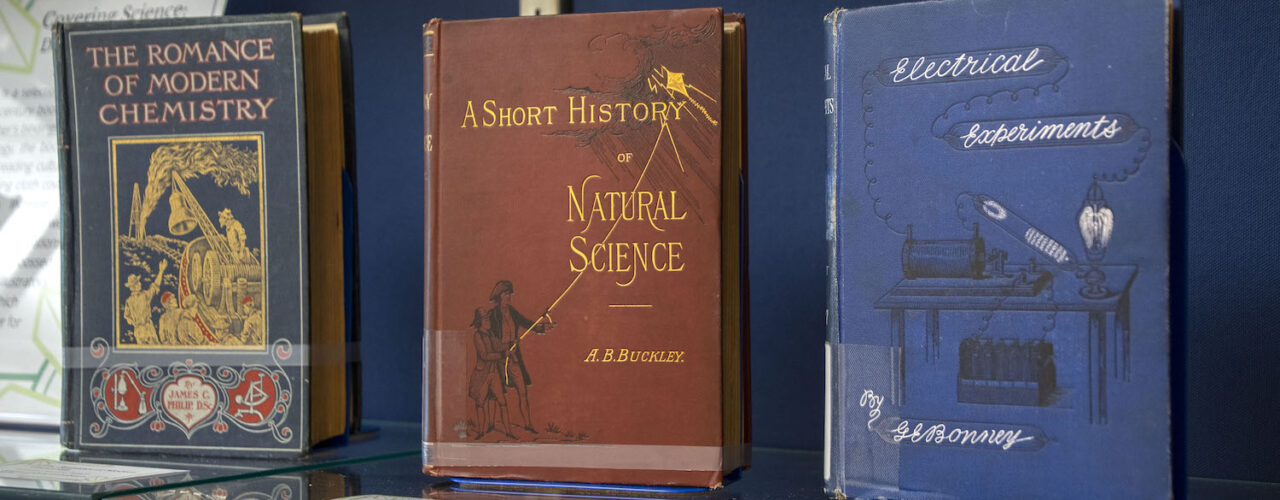
On the appeal of decorative scientific book cloth bindings.
In the spring of 2022, I filled a display cabinet in our library’s reading room with books from our collections that have caught my eye for years.
As a librarian, I’m supposed to advise against judging a book by its cover, but there are some book covers that we can simply enjoy for their own sake. This is a selection of late 19th- and early 20th-century books with decorative publisher’s cloth bindings.
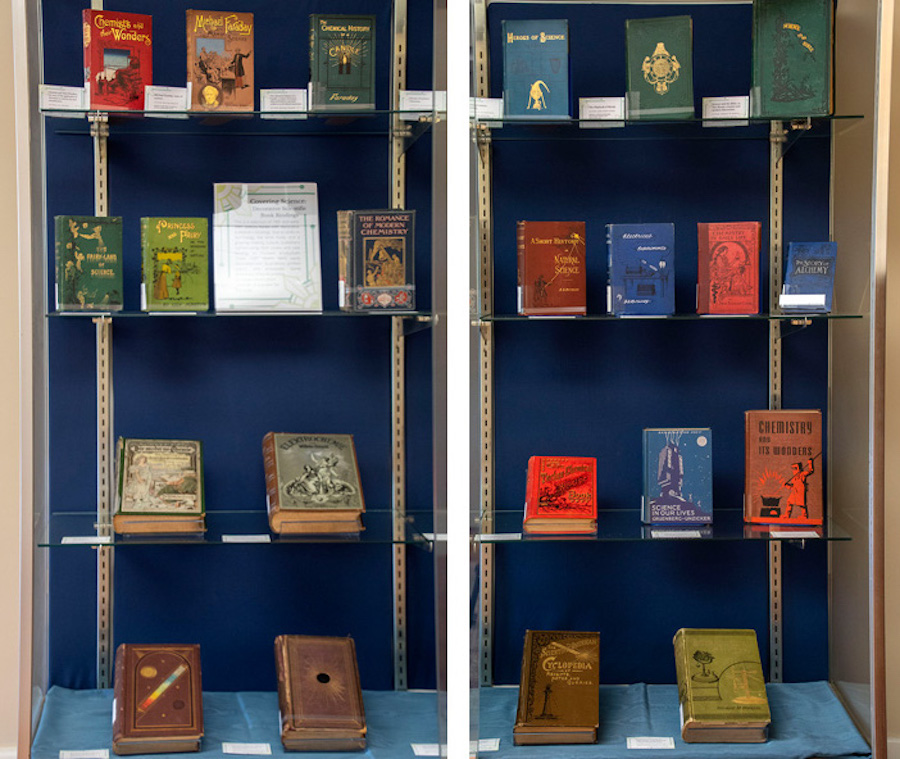
Covering Science book display.
Due to shifts in technology, more centralization in the book trade, and a growing culture of literacy and reading, publishers started replacing expensive leather covers and hand-stitched bindings with machine-made cloth covers and glued case bindings to facilitate the speed of production. These cloth covers were easily decorated with illustrations by printing and embossing colors and metallics. Some book covers became very elaborate, and publishers started hiring illustrators to create covers that could act as posters for books to increase sales. To reduce costs, cheaper dust covers eventually replaced ornate bindings, though there are a few examples of books (mostly textbooks) that continue the decorated book cover tradition.
Some covers contain scenes from the book, such as Benjamin Franklin flying a kite and key with his son (top image, center) or Michael Faraday giving one of his famous lectures (below).
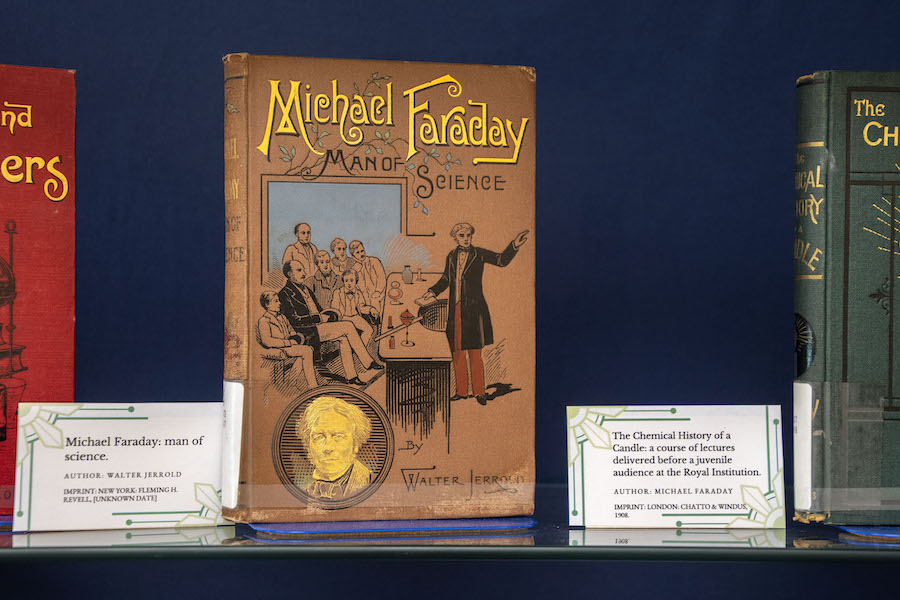
Michael Faraday: Man of Science, biography of the English scientist who contributed to the study of electromagnetism and electrochemistry, after 1865–before 1929.
The Art Nouveau movement overlapped this period and its influence can be seen in the use of symbolism such as women signifying science and electricity on one cover. On another, a personification of the chemical industry is encouraging an alchemist to stop toiling and focus on industrial possibilities.
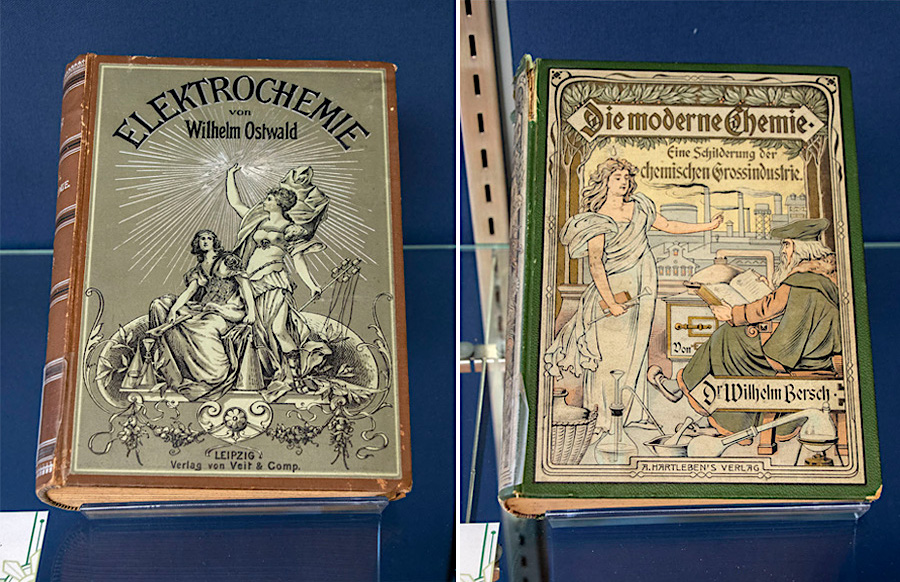
Left: Elektrochemie, Ihre Geschichte und Lehre, 1896; right: Die moderne Chemie: Eine Schilderung der chemischen Grossindustrie, 1900.
There’s even a cover with putti performing experiments, which is a longer tradition in science book illustration dating back to at least the 18th century.
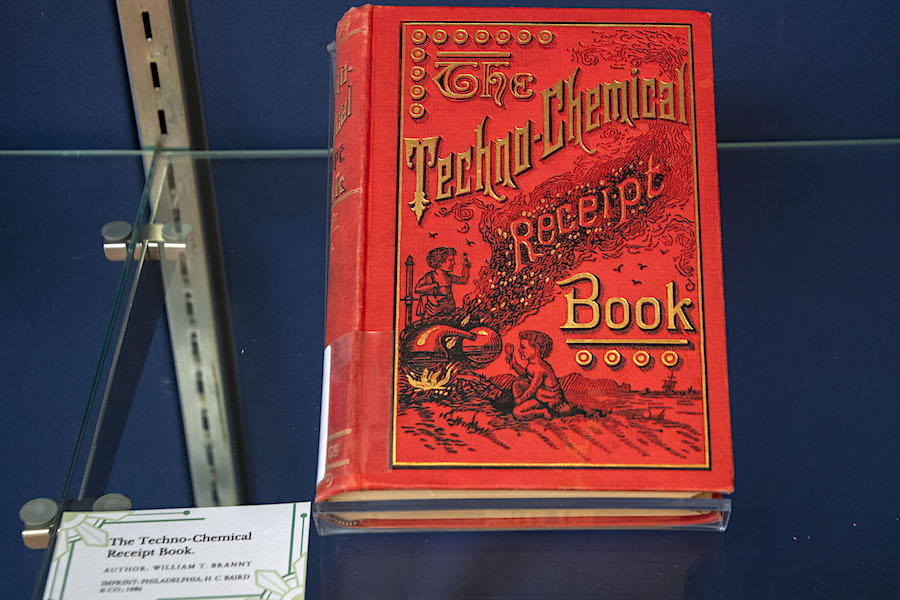
I’m especially fond of the books created for children to inspire their learning of science through fairy stories.
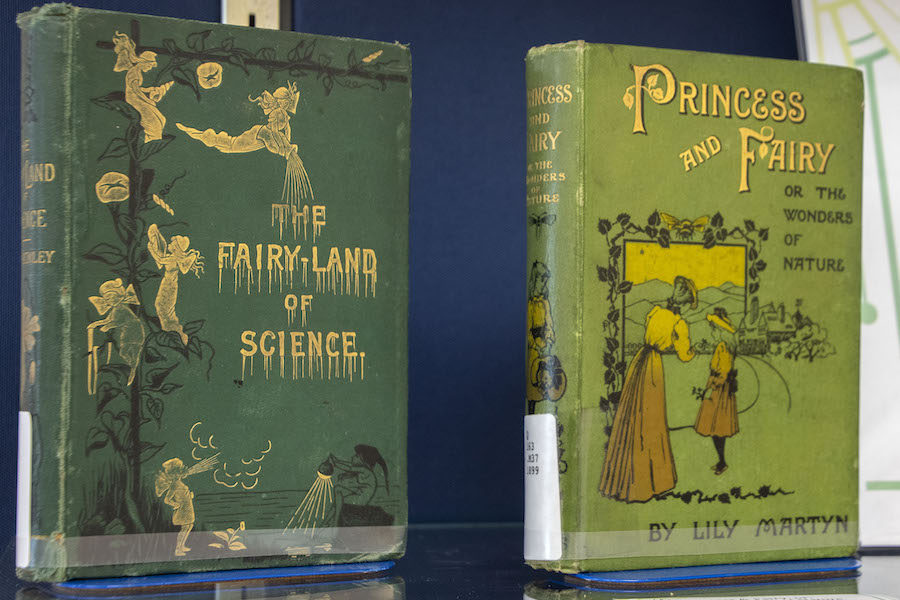
Left: The Fairy-Land of Science, 1883; right: Princess & Fairy, or, The Wonders of Nature, 1899.
A few of these book covers highlight new technologies or discoveries. I love the spectral analysis covers with the rainbow of light and the full solar eclipse. It’s a bright literary spot as we here at the Science History Institute in Philadelphia near the winter solstice.
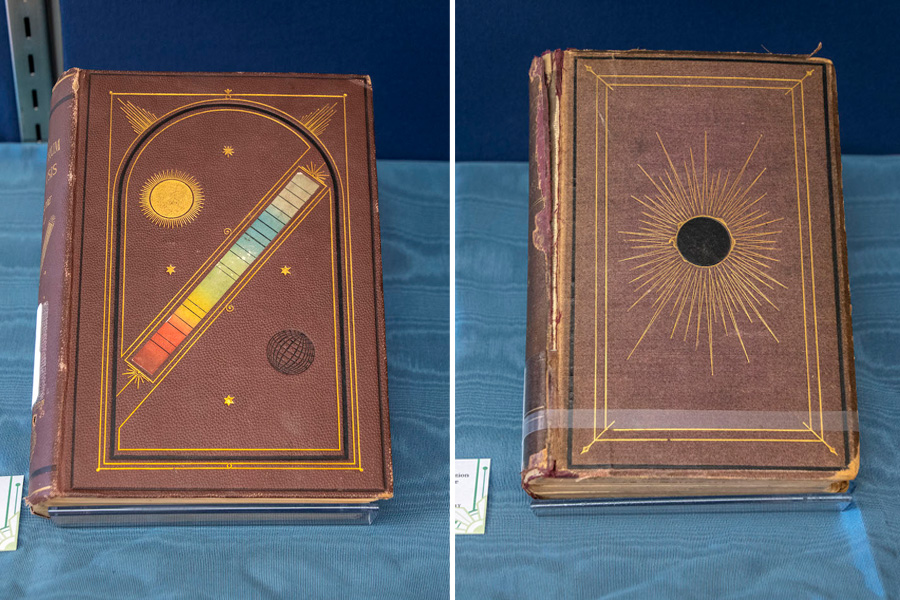
Left: Spectrum Analysis: Six Lectures, Delivered in 1868, Before the Society of Apothecaries of London, 1873; right: Spectrum Analysis in its Application to Terrestrial Substances, and the Physical Constitution of the Heavenly Bodies, 1872.
Explore the history of science behind U.S. efforts to feed schoolchildren with Lunchtime exhibition curator Jesse Smith.
Unwrapping the mystery of a Styrofoam Santa in our collections.
New World ingredients in Old World dyes.
Copy the above HTML to republish this content. We have formatted the material to follow our guidelines, which include our credit requirements. Please review our full list of guidelines for more information. By republishing this content, you agree to our republication requirements.